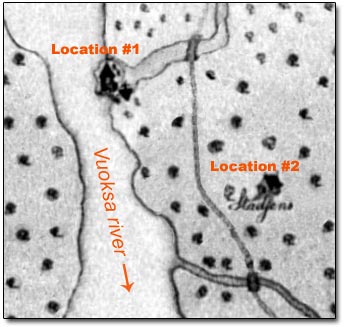Relic Hunting In Karelia
Second "Virgin" Site Discovery
I still had a few days left for investigating the location #2. That was my last chance to prove that metal detecting in this part of the Karelian Isthmus could be "fruitful." I hoped that the odds for hitting the "Jack Pot" were in my favor.

Everything else was pointing that way. The topographical map of the area showed a farm field at the location #2 with a few summer houses on its perimeter. I decided to bicycle to the site in the early evening and metal detect there throughout the night, thus, avoiding the day heat. Now it was time to explore.
"Back in the Saddle Again"

From the medieval times up to the 19th century, the rural Karelian population resided in villages and towns. By the time Finland became a Grand Duchy within the Russian Empire, the villages had already disappeared due to the numerous wars, only major towns survived.
Population of Finnish peasants moved into the vacant lots and built their own individual farmsteads scattered all over the territory. Some of them had remained that way until nowadays.
A Typical Single-Standing Karelian Farmstead

When I arrived to the location, I could not believe my luck: not only the field was not under any crops, it was just a grass field, but also most of it had recently been mowed!


Some wooden tool sheds were here and there.

